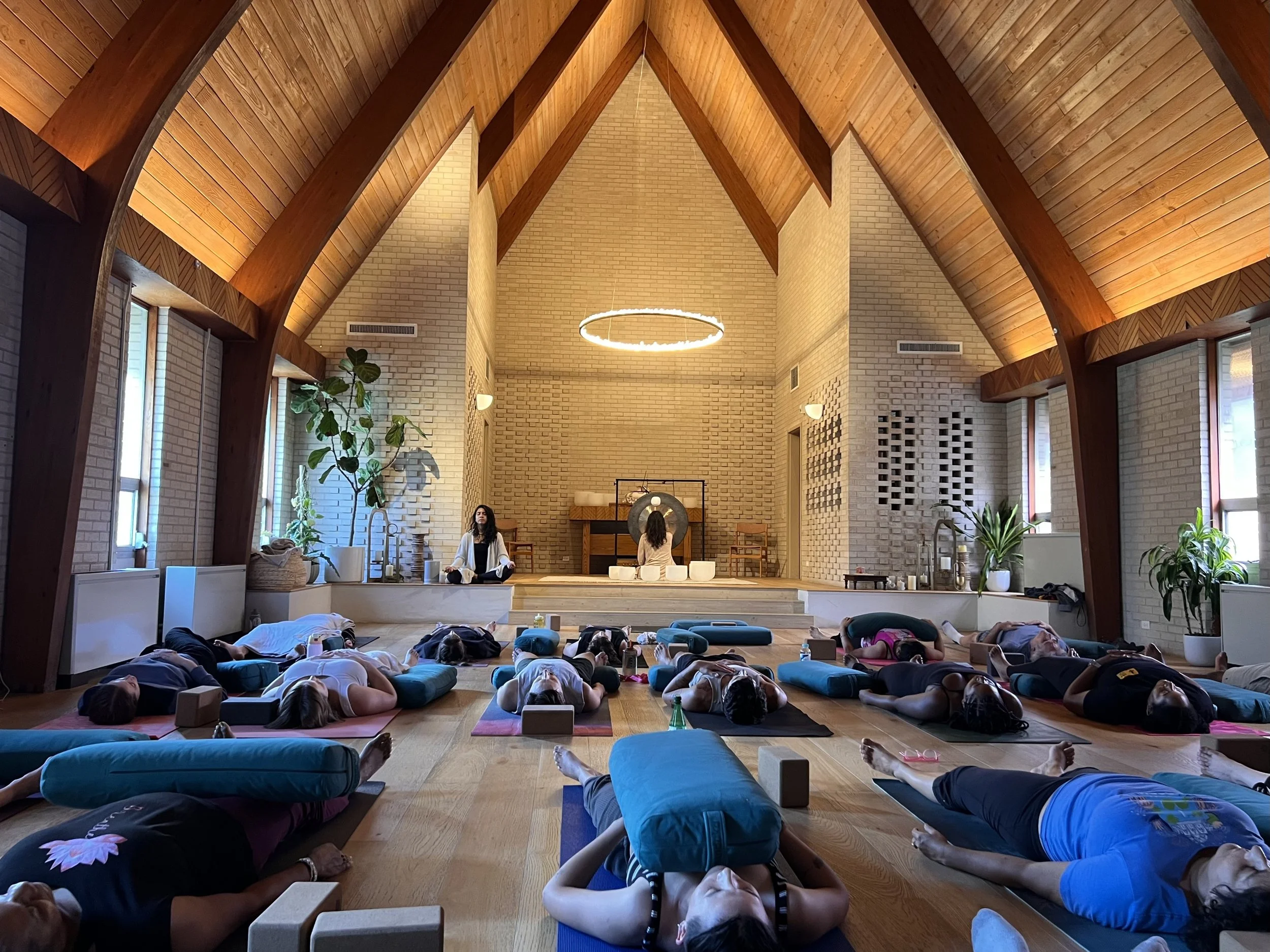
About Sound Meditation
Our approach to meditating through sound is rooted in the lineage of Nāda Yoga — the yoga of sound. In this tradition, meditation is practiced through deep listening. Sound and silence become the teacher, guiding awareness inward and helping the body, mind, and spirit return to balance.
In Nāda Yoga, sound takes two forms: Ahata Nāda, the tones we hear from instruments, voice, or movement, and Anahata Nāda, the subtle vibrations that arise in silence. Together, they guide the practice — the outer sounds help steady the body and mind, while the inner resonance gently draws awareness inward, inviting a deeper connection with oneself.
By meditating with sound and allowing space for silence, we begin to notice how vibrations move through us — shaping attention, calming the nervous system, and allowing the mind and body to settle. Regular practice strengthens focus, supports regulation, and opens space for stillness to emerge naturally.

We offer a variety of ways to experience meditation through sound— from small group sessions designed for deep personal practice, to larger community gatherings open to all.
More on the Earth Tones Sound Meditation Studio
-
With consistent practice, sound meditation helps the body and mind return to balance. The vibrations calm the nervous system, ease tension, and support emotional regulation. Over time, you may notice less anxiety, improved sleep, and a greater ability to handle stress with ease.
Meditating with sound also strengthens focus and deepens self-awareness, helping you feel more connected and present in daily life. Many people find that regular sessions promote mental clarity, emotional release, and a feeling of harmony throughout the body and mind.
As your system learns to rest in stillness, the effects often continue well beyond the session — bringing calm, resilience, and stability into the way you move through the world.
-
All offerings are designed as unguided, silent practices. This is intentional. Silence invites deeper listening, encourages personal reflection, and allows each person to connect with sound in their own way.
Though there will be no verbal guidance during your session, you’ll find written instructions and clear signage in the studio to support you. The environment is intentionally simple and calm, creating a space where awareness and stillness can unfold naturally.
-
Everything you need is provided — a cushioned mat, head pillow, bolster, blanket, and eye cover. All are optional to use, and you’re welcome to bring your own cushion. You may choose to meditate seated or reclined.
Each session begins and ends with the sound of three bells. The first set marks the start of practice, giving you a few moments to settle into your space. The final three bells signal the close of silence and completion of the session.
During the meditation, you’ll experience Ahata Nāda — the “struck” sounds — from instruments, subtle movement, and the living sounds of the city around us. These outer sounds are part of the meditation, reminders of life continuing beyond the walls.
You’ll also experience Anahata Nāda, the quiet vibration that emerges in silence.
Together, they invite awareness to settle inward.
Afterward, you’re welcome to stay up to 15 minutes to stretch, journal, or remain in quiet reflection before leaving.
-
This is a space for stillness, awareness, and deep listening. These guidelines help protect the calm and clarity this practice creates for everyone.
1. Silence
Please remain quiet before, during, and after the session. Silence allows awareness to deepen and supports others who are still in meditation.
2. No Photography or Recording
To maintain privacy and presence, photography, video, and audio recording are not permitted.
3. Phones and Devices
We encourage a tech-free space. Please silence all devices and keep them stored away throughout your visit.
4. Presence and Respect
Be mindful of the collective energy in the room. Move slowly, respect personal space, and enter and exit quietly.
5. Try Not To Fall Asleep / Snore
If you start to feel sleepy, shift your position or open your eyes to stay present with the sound. In the case that snoring becomes continuous, you may be gently tapped to help you come back into awareness.
6. Scents and Hygiene
Please avoid strong fragrances or essential oils, and arrive clean and free of heavy scents. This helps maintain a neutral, breathable space for everyone, including those with sensitivities.
7. Age Requirement
All sessions are for adults 18 and older. The environment is designed for mature participants who can maintain stillness and respect the meditative space.


